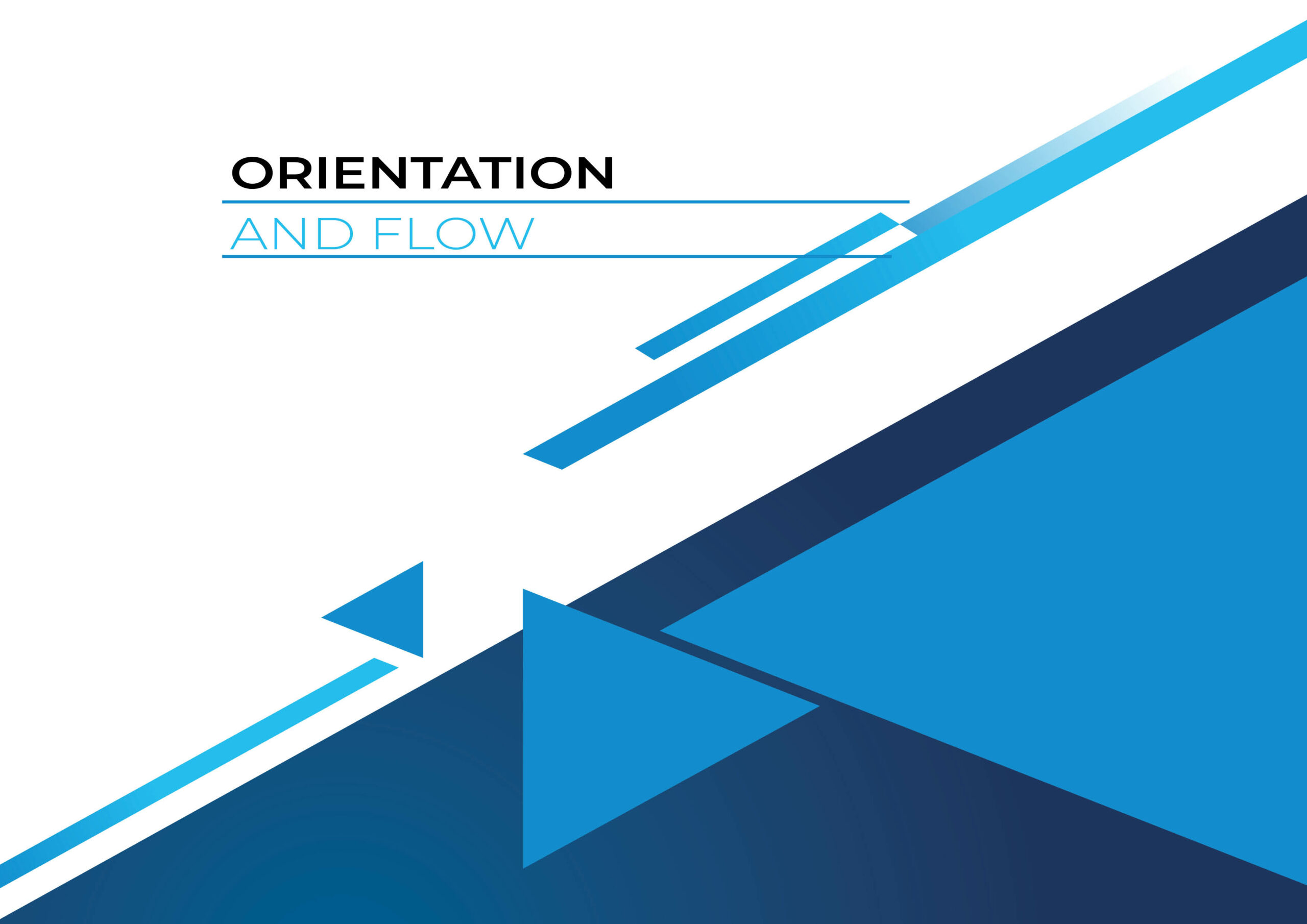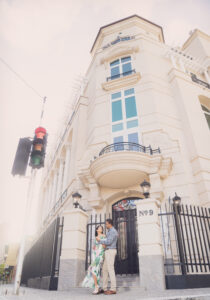Composition Techniques

R2.7 Orientation & Flow
Overview
In this section, students learn about the concept of orientation and image flow in photography, a crucial element in creating visually engaging images. This involves recognizing a scene’s natural flow, aligning the image orientation to it, considering the subject and context, minimizing distractions, and being open to experimentation. Mastering these skills can greatly enhance photo compositions, particularly in settings like portrait sessions and wedding photography, and can lead to aesthetically and technically profound images that effectively tell stories and capture emotions.
By The End of This Lesson Students Will Be Able To
- Understand the concept of orientation and image flow in photography and how it contributes to creating visually harmonious and engaging images.
- Identify the importance of alignment with the orientation of image flow in different photography settings, such as portrait sessions and wedding photography, to capture emotions, tell stories, and highlight relationships.
- Recognize the natural flow of a scene, be it vertical or horizontal, and utilize it to guide the viewer’s gaze through the composition.
- Determine the most suitable orientation for an image based on strong lines and elements within a scene, helping to avoid common beginner mistakes.
- Apply the following practices in their photography:
- Observe and identify the natural flow of the scene.
- Align the chosen orientation with the identified flow of the scene.
- Consider the subject and context when deciding on the orientation.
- Be mindful of potential distractions that may arise from elements within the frame.
- Experiment with different orientations for unexpected and captivating results.
- Appreciate that alignment with the orientation of image flow is a fundamental aspect of photography composition that can result in images that are technically and aesthetically profound.
- Implement these concepts particularly in portrait sessions and wedding photography to capture emotions and relationships effectively.
- Utilize mastery of orientation and image flow to elevate their photographic work and produce images that resonate with viewers, showcasing their unique artistic vision.
Course Content
Framing the Shot: Orientation & Flow
Understanding and incorporating the concept of orientation, or image flow, is essential in the realm of photography. By recognizing the natural flow of a scene, photographers can create visually harmonious and engaging images that resonate with viewers. Mastering the art of orientation allows photographers to enhance the visual impact of their work, capturing the essence of a scene while ensuring that the image is both aesthetically pleasing and technically sound.
In portrait sessions and wedding photography, being congruent with the orientation of image flow is crucial for capturing emotions, telling stories, and highlighting relationships. Every scene presents a distinct flow, either vertical or horizontal, which can be recognized and utilized to guide the viewer’s gaze through the composition. Paying attention to strong lines and elements within a scene can help photographers determine the most suitable orientation for their image, thereby avoiding common mistakes made by beginners.
To effectively incorporate orientation and image flow into your compositions, consider the following tips:
- Identify the natural flow of the scene: Observe the elements within a scene and identify any strong lines or patterns that guide the viewer’s gaze in a particular direction. These lines could be architectural, natural, or formed by the subjects themselves.
- Align the orientation with the flow: Once you have identified the natural flow of the scene, choose an orientation that aligns with it. For instance, if the flow is predominantly horizontal, opt for a landscape orientation to complement the scene. Conversely, if the flow is vertical, a portrait orientation may be more appropriate.
- Consider the subject and context: The subject of your photo and the context in which it is presented should also influence your choice of orientation. In portrait sessions, for example, a vertical orientation may be more suitable for capturing individual subjects, while a horizontal orientation might better accommodate group shots or expansive backgrounds.
- Be mindful of distractions: When selecting the orientation for your composition, consider the potential distractions that may be introduced by elements within the frame. Ensure that your chosen orientation emphasizes the subject and minimizes any unwanted distractions.
- Experiment with different orientations: Do not hesitate to explore different orientations, even when the natural flow of the scene seems apparent. Sometimes, experimenting with unconventional orientations can lead to unexpected and captivating results.
In conclusion, being congruent with the orientation of image flow is a fundamental aspect of photography composition that allows photographers to create visually compelling and impactful images. By recognizing the natural flow of a scene and aligning the orientation accordingly, photographers can produce images that are both technically and aesthetically profound, capturing the viewer’s attention and effectively conveying the intended message. This technique is particularly relevant in portrait sessions and wedding photography, where capturing emotions and relationships is paramount. By mastering the art of orientation and image flow, photographers can elevate their work, producing images that resonate with viewers and showcase their unique artistic vision.


Cognitive Engagement Questions
- Assignment #1: Exploring Image Flow and Orientation (Assignment Number: PHO3041-FLOR)Subject: Orientation and Image Flow in Photography
For this assignment, take a series of 5 photographs where you pay special attention to the orientation and the natural image flow. This can be achieved by identifying strong lines or patterns that guide the viewer’s gaze. Write a brief analysis of your images explaining how the choice of orientation complemented the natural flow of the scene and enhanced the overall composition.
Assignment #2: Contextual Orientation (Assignment Number: PHO3041-COR)
Subject: Orientation Based on Subject and Context in Photography
Capture 5 images focusing on the subject and context. The aim here is to utilize orientation to either enhance a subject or emphasize the context. This could be portrait shots, group shots, or expansive landscapes. Discuss how the choice of orientation was influenced by the subject and context, and the impact this had on your final images.
Assignment #3: Orientation Experimentation (Assignment Number: PHO3041-EXP)
Subject: Experimental Orientations in Photography
Experiment with different orientations in a series of 5 photos. This could mean opting for a portrait orientation where a landscape might be expected, or vice versa. The goal is to create unexpected and captivating results. Reflect on how these unconventional orientations impacted the compositions and viewer’s engagement with your images.
When submitting your assignments, please use the following format for the email subject: “Assignment Number – Your Name – Assignment Topic”. For example, “PHO3041-FLOR – Jane Smith – Orientation and Image Flow in Photography”. Please email your completed assignments and corresponding analyses to clintonali@gmail.com for evaluation and constructive criticism. Remember to save your original image files for your own records. Can’t wait to see your thoughtfully composed shots!
© 2023 Karimah Clinton Academy. All rights reserved.
